Ever Wish You Could Have A Force Field For Your Plants? — Part 3: Adaptation
How does genetic variability strengthen our plants? Do genetics have a bearing on pest resistance? Is it possible to grow plants without ever adding nutrients?
This is the third and last article in a series on how to activate nature’s inbuilt protective forcefields in our plants. The first was on getting nutritionally strong plants in order to increase Brix, creating sugars that repel insects. The second was on electricity and altering the voltage and acidity which changes the frequencies plants emit. This one is all about genetic diversity and how we can use adaptability to our advantage. Check it out!
Every year, I buy heirloom vegetable seeds. I mean these varieties are old, some going back about a hundred years. When I go to the store, I see the same Golden & Red Delicious apples, the same Fuji apples, the same Bartlett pears, the same green seedless grapes, the same Rainier cherries, the same romaine lettuce, the same russet potatoes, the same zucchini, and on and on, every year. How long have these varieties existed and been around? Where did they come from originally? And how are they the same over and over again?
Well, they are the same because their genetics don’t change. They are bred with themselves so that the results are repeatable. This is so a Black Krim tomato is predictably a Black Krim tomato year after year. Or, it’s wood from a variety of tree or vine where the original came about decades ago, sometimes hundreds of years ago, that is repeatedly grafted or rooted from those same original genetics. In a way that is kind of cool— to eat something someone else ate in a time so different from now, it’s like taking a bite of history and that is pretty amazing. But is that how it is meant to be? Are we defying something fundamental about nature’s intent for propagation by not using cross-pollinated seeds to spread offspring around?
We know it’s not good if humans inbreed. The biological aim of mating is the shuffling of DNA. Inbreeding stacks the odds of being born with a condition against you because there is less diversity to choose from out of the genetic pool. Too much is the same, so recessive traits that would normally be suppressed come out. Some of the symptoms associated with inbreeding are reduced fertility, higher infant mortality, smaller adult size, and reduced immune function…
Now think of all the issues that are common in plants today— increased pest pressure, increased disease, less fertile, high mortality, smaller size… Does it kind of sound like inbreeding deficits? It does to me, and it does to others as well. You pretty much need a regular system of nutrition, pest, and disease protection to keep many of these varieties going. But the thing is, these things have become so normalized and all we mostly see are inbred plants that we don’t even recognize that it can and should be different.
Over the last 70 years or so, plant inbreeding has become standard practice for creating or maintaining varieties in a desire for consistency and purity. But because of this pursuit, our entire food system suffers the effects of inbreeding depression. Because of the gradual weakening of vigor and plant immune systems, most crops require significant inputs and support.
As gardeners, we often blame ourselves, the soil, the weather, (our in-laws) for problems like blossom end rot, blight, pest issues, or lack of flavor. We build hoop houses to extend seasons, we work hard to amend the soil, we fertilize, spray pesticides, you name it, we do it all just to get some produce. We think it is normal to coddle, spray, and to lose plants to disease. But this is not the way it was always done. We rarely consider that the crop we are trying so hard to keep alive is weak because of the way that it was bred.
Heirloom shmairloom and ideal to whom?
In the USA, 94% of the seed diversity has disappeared, with a similar pattern happening all over the world, and that’s only with what we know about.
As such, many feel a sense of preservation by choosing to grow heirloom varieties. Keeping these around and pure seems important so that there aren’t more losses. Numerous people are under the impression as well that they are getting a “healthier” plant or variety when they grow heirlooms. We think they have been less tinkered with genetically by industry and so we are getting something more like what nature intended. Except, are we?
Heirlooms are varieties that have been isolated genetically for decades if not centuries. An heirloom was a perfect variety, say, 75 years ago when it was first made at a farm likely in a very different area from us. And then over those 75 years, it has been inbred and inbred and inbred (repeat that 75 times) continuously every year— its genetic diversity is gone, its adaptation to that original farm is gone. This means with each generation there is less to pull from. They now have very narrow genetic information, which means varieties lose their genetic memory to deal with specific pests and diseases and they become these small, fragile crops.
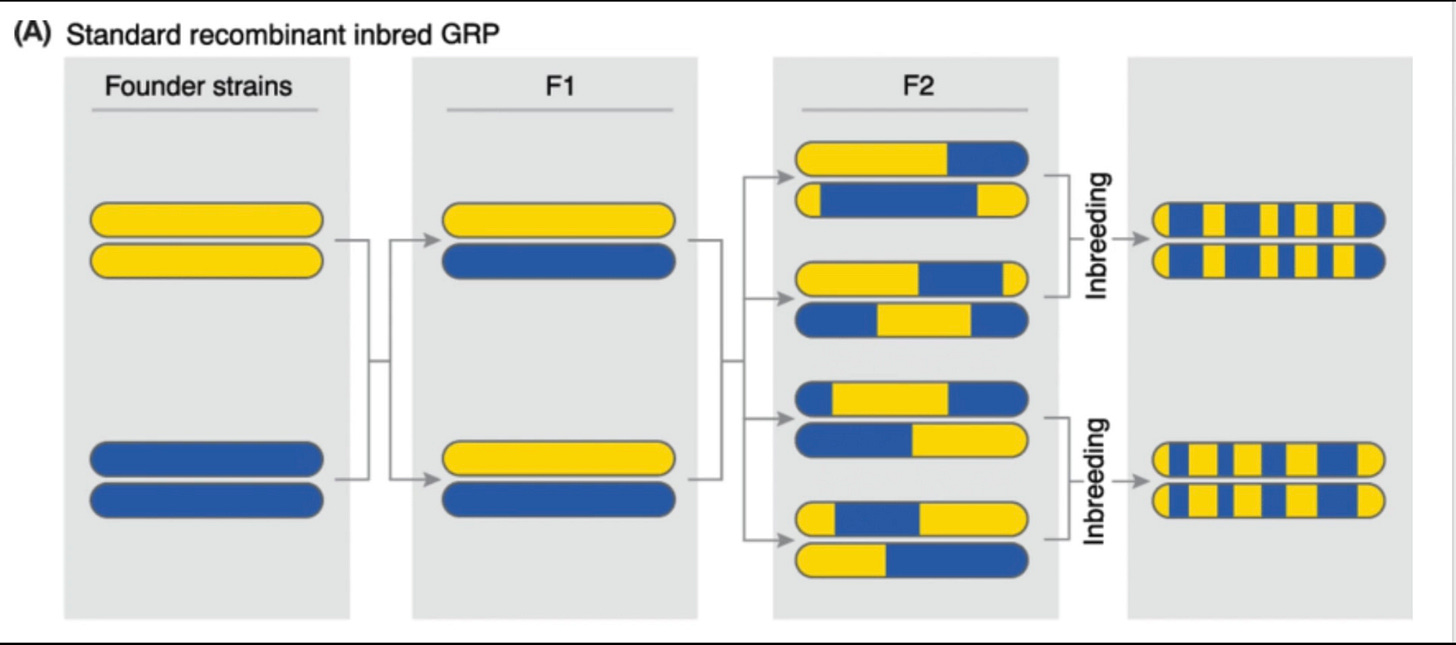
Then we have the other option of modern hybrid varieties. Vegetable breeders today select for "high yields under ideal conditions". (Note, they are not selecting for taste.) And those ideal conditions are such that require plenty of fertilizer, pesticides, and no competition from weeds. They are inadvertantly selecting against plants that are better at building relationships with soil microbes. Not to mention that many of these varieties are inbred for years to “stabilize” the genetics before going to public seed sales. We end up bending ourselves and our gardens over backwards to cater to this type of plant.
The breeders:
Now us:
Cross-pollination is bad good…
Saving seeds from plants that have been cross-pollinated is often discouraged with the idea that you don’t know what you are going to get. It could be good, it could be bad. It’s considered too unpredictable to bother with. (Say that to your kid, LOL, a living example of ‘cross-pollination’! 😜) What many gardeners don’t realize is that having genetically diverse crops with seeds obtained from plants locally grown to you brings a plethora of benefits.
Plants that have been allowed to cross-pollinate with unrelated members of the same species are more vigorous and productive, and can adapt more quickly to difficult environments. You also get a variety of shapes, tastes, colors, and sizes. And isn’t that the spice of life as the saying goes?
Plants over time become locally adapted to an area through making epigenetic changes in response to environmental stresses. These changes can be passed on to offspring, potentially improving their ability to cope with similar stresses. Each generation has genetic adaptations for a given environment and can become fully adapted after several years.
Seeds are also inoculated with native microbes that aid in that adaptation to the local area and affect genetic expression. So if we buy seeds elsewhere, we aren't getting those regionally adapted microbes or those beneficial epigenetic changes. For me in California, if I’m buying seeds from Georgia, those seeds are adapted to humid situations and a completely different growing environment than here. Here, I am in a dry high desert situation so how are microbes and genes adapted to wet, humid situations going to help my plants in my dry, drought situation? They’re not. It’s the wrong setup and my soil is totally alien to them. This means more struggle and frustration for me trying to grow them and adapting my garden to them. Buying seeds local to me, or better yet saving my own seeds, gives me the advantage of not starting from scratch each season.
The simple act of allowing heirlooms to cross with other varieties that are visibly different may be enough to allow a recombination of genes that increases disease and pest resistance, even if neither parent variety had resistance. Cross-pollinating facilitates genetic recombination by introducing new alleles into the population. This increased allelic diversity provides more options for the plant to adapt to various conditions. Cross-pollination also breaks up linkage groups which allows beneficial genes to be expressed independently instead of being linked to undesirable traits.
Have you heard of hybrid vigor? This is a classic case where the offspring has increased vigor than either parent because it's able to exhibit improved traits. Hybrid vigor would not be a thing if parent plants were already genetically diverse. So allowing cross-pollination and then saving those seeds is like having “hybrid vigor” every season because that is the normal course in nature.
There are also complex inherited traits in plants that are important, such as disease & pest resistance or nutrient density. For example, different varieties might have different genes for disease resistance. When crossed, the offspring could inherit multiple resistance genes, providing broader or stronger protection. With a more diverse set of genes, plants can potentially adapt to a wider range of environmental conditions.
Imagine the colors below representing different conditions— heat, drought, cold, wet, pests, disease, flavor, soil type, etc.— and then note how they all add their strength as they are combined through crossing:
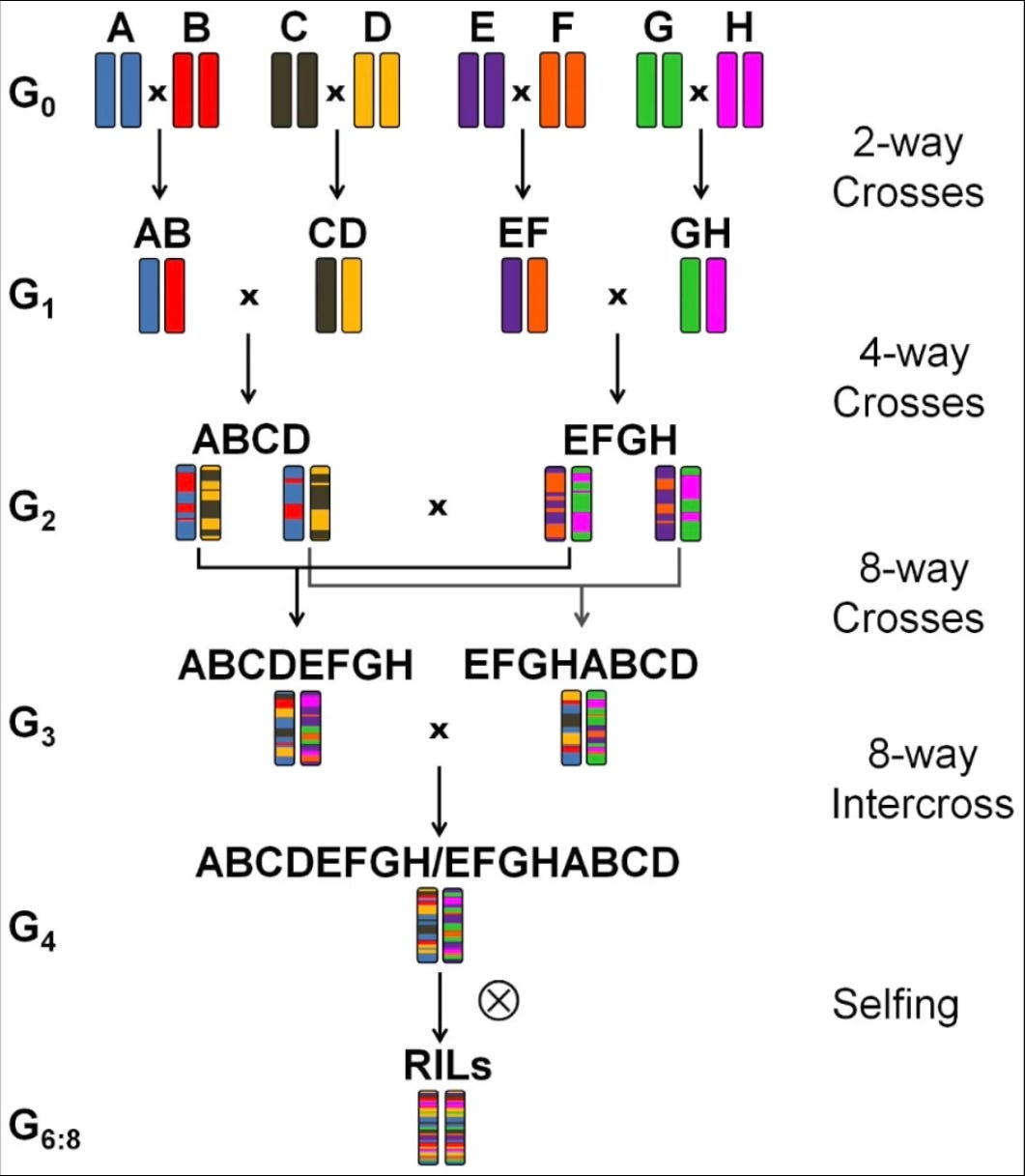
Whenever everything has the same genetics, the same strengths, the same weaknesses, it is easy to cause a massive wipeout. All it takes is one thing that set of genetics is vulnerable to and because they are all the same, they are all affected. Think of the Irish Potato Famine. They all grew the same exact few varieties, mostly one variety, and so they all had the same susceptibility to late blight. Everything was gone, just like that.
There is power in genetic diversity. Every time something is cross-pollinated with unrelated members, it is adding different genetics to the gene pool allowing for more available choices when issues arise. Having a huge gene pool means more adaptation can happen. With it, we can develop plant varieties that are more resilient, productive, and suited to our specific growing conditions. What a benefit to our gardens (and to our aching backs!)
Genetics affect nutrient uptake?
Speaking of adaptation, I couldn't help but to think of the post by John Kempf I shared in the minerals competing with each other article which talked about Honeycrisp apples having higher potassium concentrations than other varieties grown right next to them in the same conditions. Whatever caused the Honeycrisp variety to hyper-accumulate potassium? Could it have been an adaptation to the environment from which it originally came? Taken out of that environment it has an issue, but what if that varietal difference was exactly what it needed in the soil it originated from?
Such differences have also been noted in peppers and tomatoes. “Tomatoes resistant to blossom end rot are better at accumulating calcium in the fruit.” Blossom end rot is more controlled by genetics than by lack of calcium or inconsistent watering, according to this article. The determining factor for the amount of calcium in the tomato is the plant's ability to partner with the microbes that will supply available calcium to the plant.
Differences are also well noted amongst fig varieties in research. Various varieties will handle nutrients differently from each other regardless of what minerals are in the soil or if they are in the same growing conditions.
It was interesting to me to find out how much genetics impact the nutrient density of varieties. Here we are working so hard to create the right inputs, to foliar spray, to apply everything at the right time, which to a degree may have merit. But it's also an indication of a plant that is not able to get the nutrients it needs on its own like it should. It’s not genetically adapted to our conditions, it’s adapted to somewhere else and we’re having to compensate.
Nutrient density is important to me because it does have a direct bearing on pest resistance and on human health. Genetics seem to determine how well plants are able to collect nutrients from the soil, which seems directly linked to their ability to form microbial relationships. Some plants can't form those relationships with the microbes they need to thrive, because they've been selected from plants that were spoon-fed synthetic nutrients over many generations.
“Healthy soil with excellent microbiology can only provide the biggest benefits to plants genetically capable of maximizing these partnerships.”
According to Julia Dakin, “every time a breeder selects for a trait such as increased yield, there is a genetic ‘tradeoff’ in which a different trait will be less pronounced. One of the losers throughout this process has been plants’ ability to form beneficial relationships with microbes. When plants are fertilized, they have no incentive to develop microbial relationships for better plant nutrition.” Because breeders for the last 70 years have been selecting for high yields in fertilized conditions (NPK), they are not looking for plants that perform better in low-nutrient conditions, (the ones better able to form microbial or fungal partnerships to feed and protect themselves).
“A compounding problem is that the same plants that perform better in low-nutrient environments tend to underperform in high-nutrient environments (R. Ford Denison, Darwinian Agriculture, p. 192), so the plants that are better able to produce yields in unamended soils are actually selected against.
“By not applying loads of fertility, and by selecting individual plants better adapted to growing in those conditions, you’ll be moving toward a population that needs less fertilizer in order to thrive, is more competent at forming relationships with mycorrhizal and other partners, and has higher nutrient density in the fruit it produces.”
Plants are meant to have symbiotic relationships with microbes. Plants feed life in the soil with their exudates, and in turn, endophytes feed the plants. According to Dr. James White, carrots had increased nutrient density when inoculated with specific endophytes. So a plant’s ability to form these microbial relationships is very important to nutrient content. If a plant is unable to meet its nutrient needs, that is a huge genetic deficit and an indication of nature trying to get rid of what is faulty. But instead, we put them on fertilizer life support and wonder why the plants continue to have issues.

It was interesting to me to find out that wild tomatoes can form mycorrhizal associations that benefit them but that many domesticated tomato varieties can’t do that. There is a huge genetic bottleneck in the domestication of tomatoes with a 95% loss of genetic diversity in our tomatoes of today compared to the wild tomatoes of their homeland in the Andes. Reportedly, “one study found more genetic diversity in a single wild tomato variety than in all the studied domestic lines combined.“ It was also interesting to me that many modern tomatoes have lost their ability to cross-pollinate naturally. Reduced fertility is an inbreeding deficit after all.

Change the soil or adapt the plant to your soil?
The fact that plants can adapt to different soil types is often not talked about. We are always told that we need to amend and to change our soil with the right mineral balance in order to have healthy plants. It can be expensive, time-consuming and labor-intensive to do all of that work year after year. But those selecting plants for adaptation are finding out otherwise. Julia Dakin, a gardener in Northern California, has sandy and acidic soils 7 times higher in aluminum than recommended.
She learned that plants can adapt to high levels of toxic minerals and has focused on that ability in her garden. She plants extra seeds of mixed varieties, some new and some she saved herself from previous seasons, and has observed an obvious benefit. Some plants handle the conditions fine and others succumb.
Notice the difference between these two potato plants:
We’ve talked before how only unhealthy plants are affected by pests and they are unhealthy because they have mineral deficiencies or excesses. But when a plant is adapted to our soil and growing conditions, it is able to extract exactly what it needs.
Even amongst the same species, we see that different varieties have different nutrient-capturing abilities giving different results in the same exact soil and growing conditions:
Because she is increasing the genetic diversity in her garden more and more each year, she is able to select plants that are capable of growing in her natural soil, full of nutrients and health, without having to amend anything. They are adapting to her conditions and creating varieties suited just for her area. No sprays, no fixing the soil, no weather help, no weeding, nothing special. And it’s not just her having this experience, many others in different areas are too. Was it always this easy and we lost it because of seed catalogues? My goodness, what an unknown sacrifice of something valuable! The above is a fine example of diversity in action.
Genetic diversity = Stress tolerance = More nutrition?
There is an added benefit of increasing plants’ secondary metabolites through stress. (It even has a fancy term called “xenohormesis”.) When we select for plants that thrive without various types of crop support, we expose our plants to more stress and they tolerate more stress. That stress exposure increases their nutrient density by causing them to have higher levels of antioxidants and other phytonutrients. Those antioxidants are released to protect themselves, but they have the “beneficial side effect of also improving the nutritional quality of plants in the human diet.”
For example, drought stress can increase the concentrations of certain nutrients in crops such as carotenoids and ascorbic acid, which act as antioxidants to protect the plant from oxidative stress. Heat stress can increase the concentrations of secondary metabolites like flavonoids, which helps to protect the plant from UV damage. This extends a similar stress resistance in humans who eat those nutrients in the plants.
All of these phytonutrients are what bring taste as well. Redder tomatoes rich in lycopene, deep orange carrots and squash full of beta-carotene— they have flavor and taste better.
This is not to say that all stress is good. Stress when too young can cause the loss of a plant, and long-term stress can lead to certain structural transformations causing an undesirable change in nutrients. Many modern varieties and heirlooms have reduced ability to respond effectively to common environmental stressors. So adding stress to an inbred variety may not achieve anything except death. Still it is showing that allowing some productive short-term stress to happen is beneficial, it’s just that the genetic adaptation needs to be there for the plant to tolerate it. So getting to a place of genetic diversity benefits health all around.
Letting nature do the work and select the survivors!
When we avoid coddling each plant, we see which varieties thrive in our gardens exactly as they exist now without having to change our garden to fit the plant. When we save our own seeds from those strong plants, we are allowing nature to select which varieties we should grow. These are the ones that will need minimal inputs from us and can grow in the conditions we have native to our area, pests included.
When plants are exposed to stressors like drought, intense sunlight, or pests, this is signaling adaptive epigenetic changes in the plant. They teach the plant how to survive and thrive in the ecosystem exactly as it exists. All of this leads to genetic changes for each successive generation to be stronger and hardier without us doing a thing.
🧬 Did a raccoon cause half your corn to fall down one night? Good! The corn still standing was strong enough to not be knocked over or was unappealing to the raccoon. That is the corn you want seeds from.
🧬 Did you lose all but two plants to a late frost? Great! Those two plants are the ones with the traits to withstand late-season frosts.
🧬 Did bugs eat a lot of your pepper plants, a bunch of others got blossom end rot, and you ended up with just a few peppers? This is fantastic! These are the ones to save seeds from because they were resistant to those things.
You don’t have to know what genes they have, you just need to see which does well in your area. Then you don’t have to worry about if you get all of the mineral inputs right, if you get too much rain, if the deer come along, or who knows what. Nature is doing the selection and adaptation for you. Each generation you grow from your surviving stock will be more and more resistant to those things.
It is hard when you lose a lot of plants in one season, no doubt. But love the failures. It is a natural elimination of genetics not working in your location. This is how you will end up growing more with fewer inputs and less work. Each season will be more and more rewarding with flavorful produce. You plant the seedlings, set up the irrigation on a timer, and the rest of the season is you in your lounge chair drinking your beverage of choice until harvesttime... (Mostly... You may have to do some things, like shoo your dog away or whatever.) While maybe not exactly literal, the point is that a lot of the worry and fuss goes away when we grow something meant for our area.
The lost art of seed saving
Seed saving cross-pollinated seeds is a great way to get diversity back and to have varieties adapted to current conditions. Cross-pollinating beloved heirlooms is a great way to carry on their genetics and traits without sacrificing health. Of course, there is a bit more to cross-pollination, not all species cross-pollinate easily anymore, some hybrids have male sterility bred into them which we don’t want to add to our genetics, and a few other things. So maybe a future article will be forthcoming on that, or check out the book and course recommended below.* But in the meantime, consider this…
An heirloom vegetable is much like your great-grandpa. Your great-grandpa grew up in a particular generation he adapted to: he used the colloquialisms, listened to the music, had the hairstyle, and the clothes. He fit in great then because that was his time… but try to get him to update his style or give him a cell phone today and ay, ay, ay, good luck! Heirloom vegetables are like that— they were adapted to a particular place and time, but today’s world? Eek, it’s completely different! We love them for who they were, and we love today’s generation for who they are. All with their own strengths and benefits. Think of all the color added to the world because life did not stop at your great-grandpa; your parents, you, and your children exist and each brings something to life that we enjoy. Your great-grandpa is reflected in you and you carry bits of him with you. What vegetables and fruits are we missing out on because we’re not letting the new generations to come about? Every year is a new opportunity for something great and memorable. Let’s see what happens!
“Many of our plants are stuck in a genetic snapshot of time… [while] disease pathogens, insects, and climate change evolve and adapt.”
It used to be that towns or regions were known for growing certain great things unique to them. How fun to travel around and taste these different things! Now everything is becoming kind of homogenized and the same. Great tomatoes of Italy are now tomatoes of China imported to Italy…and the rest of Europe, the USA, and other locales as one example. How about bringing some of that regional distinctiveness back so that we broaden the spectrum of possibilities? What about saving our own seeds and adding some spice and allure to our gardens? You could have something that no one else in the entire world has that is just for you simply by saving your own seeds.
This is how it used to be— farmers and gardeners alike would save seeds at the end of each season. Families, friends, and neighbors might trade and share varieties as needed. All of those seeds were adapted to their areas, often cross-pollinated, and healthier overall. Something not to your taste? Chuck it! Something delectably delicious? Save it! It’s not that hard to save seeds… Have you ever tried it? How about giving it a go and seeing where it leads next year? Could be fun!
If saving seeds is not your thing, there are resources (see below) for getting regionally grown seeds and landraces from others doing their own projects. Maybe give some of these a try for improvement in your own garden and to support those trying to diversify genetics?
(*A quick note that “open-pollination” is not the same as “cross-pollination”. Open-pollinated varieties are still sold true-to-type because the plants grown together were all of the same variety or closely related enough that no differences can be detected in future plants. Open-pollination is still inbreeding pollination when it comes to seed sales.)
On to fruit trees…
If you haven’t guessed yet from the above, this article is about landraces. It’s something I am really getting into and am hoping to get some cross-pollination going this year in my garden as the environment here sometimes feels downright hostile. There have been years I have lost my entire garden to critters, sometimes most in one night! So, I could really use some adapted plants. I also really like the idea of choosing traits that I love and coming up with my own unique varieties. Annual vegetables can be so quickly rewarding for this. But as you know, I grow fruit trees as well. You may be wondering how in the world this works with longer-lasting trees. I certainly wondered that!
Well, genetic diversity and local adaptation benefits fruit trees as well. All of the same benefits as mentioned above. If you can get seeds from fruit you like, preferably from a local grower and someone you can ask what it was cross-pollinated with, plant them. See what comes up naturally in your environment. Yes, it may take a number of years before you get viable fruit, but it could be really worth it. I’m not opposed to the idea of gorilla-planting these seeds in an open area either, (not on someone else's land.) You are more likely to get varieties hardy to your area by using seeds from fruit grown where you live out of the type of conditions you wish to grow in. Each generation should get hardier and more adapted.
Of course there are limitations. You can’t take a hot tropic native and plop it into snowy Alaska and expect it to work, there is only so much adaptation that can take place. But cultivating varieties to flower or fruit at proper times for the length of your season with small changes in timing is something that others have tackled and succeeded with as an example. Just having a relief in nutrient issues, pest pressure, or climate factors can be a benefit worth pursuing.
Sometimes you can take a cutting from a seedling and graft it onto a mature tree to get fruit sooner. This can give you an idea of what to expect from that seedling as it grows. Or how about using a mature adapted seedling as rootstock? Could that help with nutrient availability to existing varieties grafted onto them?
“The first priority of landrace gardeners is to select plants that are more resistant to their local pests, so that all subsequent generations will thrive in that ecosystem.”
In landracing, they really focus on plants adapting to pressures. For myself, I am really curious if the fig trees here can have some adaptability to the black fig fly. I have volunteer seedlings in my yard and am hoping to test this out one year soon. I already see how these seedlings grow so much better in my local conditions than other well-known and long-propagated varieties. They literally sprout and grow between a layer of weed cloth and pea gravel, only getting runoff from my potted trees. They do not have any signs of nutrient deficiencies like the potted trees of known cultivars do. I think it is absolutely amazing how nature works like that. All the stress with the potted varieties that originated elsewhere, no stress with the seedlings originating from my yard.
I can’t help but think of some varieties that are known water hogs, looking at you VdB! Could it be that its mother home was a wetter environment? Or what about Black Madeira that struggles to grow so much? What was it about its homeland and home soil it had adapted to that we’re not matching? Maybe we’ll never know and maybe it’s nothing. But these possibilities are intriguing just the same.
Just imagine what your area would look like if everyone had planted regionally adapted seeds long ago instead of everyone trying to grow Fuji apples or Elberta peaches. (I’d hate to hear about The Great Fuji Apple Famine!) Can you see the diversity and the flavors, things ripening properly for your climate? Every yard having a little something different and unique. Isn’t it beautiful? Let’s make it a reality.
* This article was heavily inspired by Joseph Lofthouse’s book, Landrace Gardening: Food Security through Biodiversity and Promiscuous Pollination, and Julia Dakin’s Going to Seed course, “Adaptation Gardening: Growing Modern Landraces”. All featured quotes are from Julia Dakin’s course. Both are highly recommended and contain so much more information than I was able to present here. I hope you check them out!
Series conclusion…
I hope you all enjoyed this series and that it helped to give a different perspective on insects! They are not our enemies trying to harm our crops or take food away from us. They are literally protecting us from consuming nutritionally unfit food. It’s important to me to help others see that we are not in hopeless situations with pests and diseases. When we work with the system as it was created to function, issues go away.
It’s become evident that we have lost a certain amount of knowledge in the last century in the name of progress and we have normalized something abnormal. We’ve become addicted to point-and-shoot cover-ups rather than identifying the underlying causes of various challenges. These challenges are seen as our enemy instead of nature pointing out the error to us. We don’t deal with the low-oil light in our car by putting a piece of tape over it so that we can’t see it. We deal with it by fixing the reason that the light came on— adding oil. The same is true with agriculture.
Nature has turned on the ‘fix engine light’ with pests in glaring fashion and we need to fix the reasons why the light is on, then the light turns off because the reason goes away. This is how we eliminate pests without damaging ourselves or others, or making the situation worse. Have you ever continued to drive a car with low oil? What happens? Nothing good and the problem gets worse! The same thing is true when we just kill the pests but never fix what started the issues to begin with, it just gets worse and worse because we’re running an engine without what it needs to run smoothly.
The good news is that we have also gained information throughout this, it is absolutely fixable and really not that hard to do, it just takes time. What a novel idea to just grow healthier plants instead of waiting for the latest pesticide to hit the market. Well, I hope some of that novelty has gone away and the practicality of it is seen. The fact that increasing plant health increases our health makes it a win-win. So may the bugs be gone from your yards because health reigns supreme!
And with that…
Here is this article‘s dedication to all of your surviving (and adapted) plants. Sing it loud and proud to all your strong ones, you know who they are, the indestructibles that never die no matter what you allow to happen to them. This is for them, have a dance party …and save their seeds. 💪
↓↓↓
↓↓↓
↓↓↓Additional resources to this article:
If you have time, this is a good documentary to watch to gain perspective on the seed industry and its priorities:
Regionally adapted seeds, landraces, and grexes
Going to Seed— Free seeds, courses, & community
https://store.experimentalfarmnetwork.org/ (Location: Philadelphia, Pennsylvania)
https://snakeriverseeds.com/ (Location: Intermountain West, Utah-ish? Idaho?)
https://www.thebuffaloseedcompany.com/ (Location: Eastern Kansas and Western Missouri)
https://www.quailseeds.com/ (Location: Northern California)
https://vibrantearthseeds.com/collections/landrace-seeds (Location: Four Corners of Colorado, Utah, New Mexico and Arizona)
https://givinggroundseeds.com/search?q=Lofthouse (Location: Idaho)
https://wildmountainseeds.com/ (Location: Colorado)
https://www.resilientseeds.com/ (Location: Pacific Northwest)
https://www.pennandcordsgarden.com/miss-penns-mountain-seeds.html (Location: Colorado Mountains)
https://greatlakesstapleseeds.com/collections/landrace-varieties (Location: Michigan)
https://www.cultivariable.com/ (Location: Washington, true potato seeds)
https://www.adaptiveseeds.com/ (Location: Pacific Northwest)
https://exchange.seedsavers.org/home (Location: Variable)
https://www.nativeseeds.org/pages/seeds (Location: Desert Southwest)
https://www.southernexposure.com/ (Location: Virginia)
https://www.seedstrust.com/ (Location: Colorado)
https://commonwealthseeds.com/ (Location: Virginia, Tennessee, North Carolina)
https://highdesertseed.com/ (Location: Colorado)
CANADA:
https://hawthornfarm.ca/ (Location: Ontario)
References from Going to Seed
I thought these were some great references and I wanted to share them with you.
Genetics and Plant Breeding
Increased yields correspond to lower nutrient density: From: Nutrient Density Decline Linked to the Dilution Effect-
Genetic Diversity: the relationship to nutrient density
“It is well established that inbreeding can increase a plant’s susceptibility to herbivores by diminishing morphological and chemical defences (Campbell et al., 2013; Kariyat et al., 2012; Kalske et al., 2014)”
“Our findings suggest that inbreeding compromises herbivory‐induced metabolic defences in S. latifolia, and simultaneously reduces the nutritional quality of plants.” “Herbivores consumed more biomass from, but showed reduced growth on, inbred than outbred native plants.” “In accordance with our hypothesis, inbred S. latifolia plants from both distribution ranges for the most part incurred higher infestation damage from natural enemies in the common garden than outbreds. Plants often exhibit increased susceptibility to enemies following inbreeding.” From: Inbreeding diminishes herbivore‐induced metabolic responses in native and invasive plant populations [2019]
"As compared to outbred plants, inbreds may exhibit a lower expression of genes involved in the induction of defense compounds" From: Release from natural enemies mitigates inbreeding depression in native and invasive Silene latifolia populations
Plant Stress Increases Nutrient Density
“When the volunteers were exposed to enough UV rays to produce a modest sunburn, the people who had been consuming tomato paste were 40% less red overall.”
“How could healthier soil not lead to healthier food? From the perspective of agriculture—specifically, the noble soil farmer investing in nutritive health through time-honored methods—the question certainly merits some head scratching. From: Healthy Benefits of Stressed out Plants
A more global question in this context is whether we are losing important health and nutritional benefits by consuming agricultural products grown in soils and conditions that maximize crop yield but that minimize the stress that would have existed in more natural environments. Xenohormesis: Health Benefits from eons of plant stress
“To combat herbivory, plants have evolved a broad range of defense mechanisms”(Abebe, 2021). From Myco-Synergism Boosts Herbivory-Induced Maize Defense by Triggering Antioxidants and Phytohormone Signaling
In this study, cold stress increased total phenolic content of basil plants.
Bohnert, H. J., & Sheveleva, E. (1998). Plant stress adaptations—making metabolism move. Current opinion in plant biology, 1(3), 267-274. doi: 10.1016/s1369-5266(98)80265-7
Hirschi, K. D. (2009). Nutrient biofortification of food crops. Annual review of nutrition, 29, 401-421. doi: 10.1146/annurev-nutr-080508-141143
Kiani-Pouya, A., Rasouli-Sadaghiani, M. H., Bahramnejad, B., & Mohammadi, M. (2018). The effects of plant stress on nutrient concentrations in crops: a review. Journal of Plant Nutrition, 41(14), 1858-1873. doi: 10.1080/01904167.2018.1492274
Wijewardana, C., & Weerahewa, H. L. (2019). Plant stress and nutrient management for sustainable crop production. Journal of Plant Nutrition, 42(12), 1501-1521. doi: 10.1080/01904167.2019.1598049



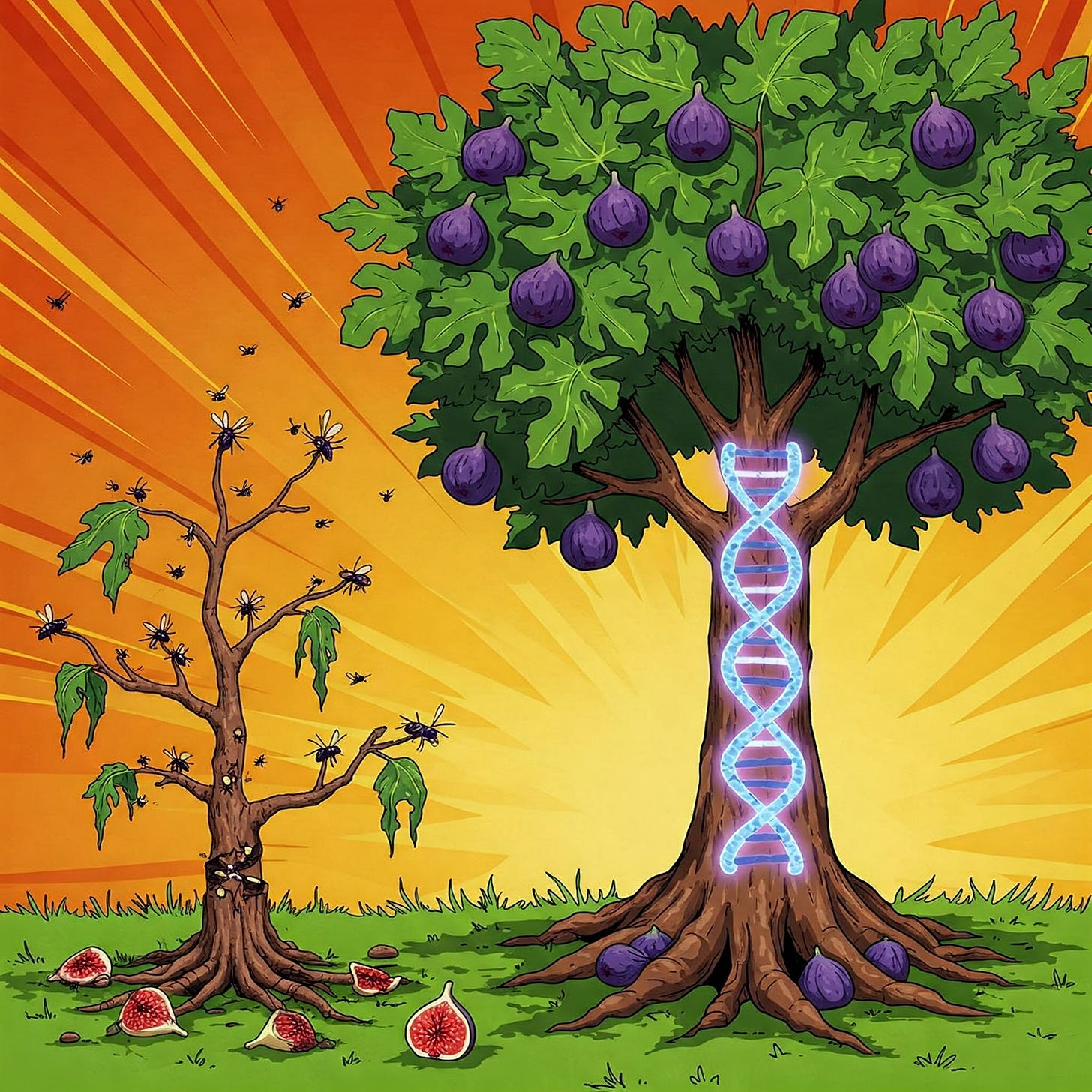
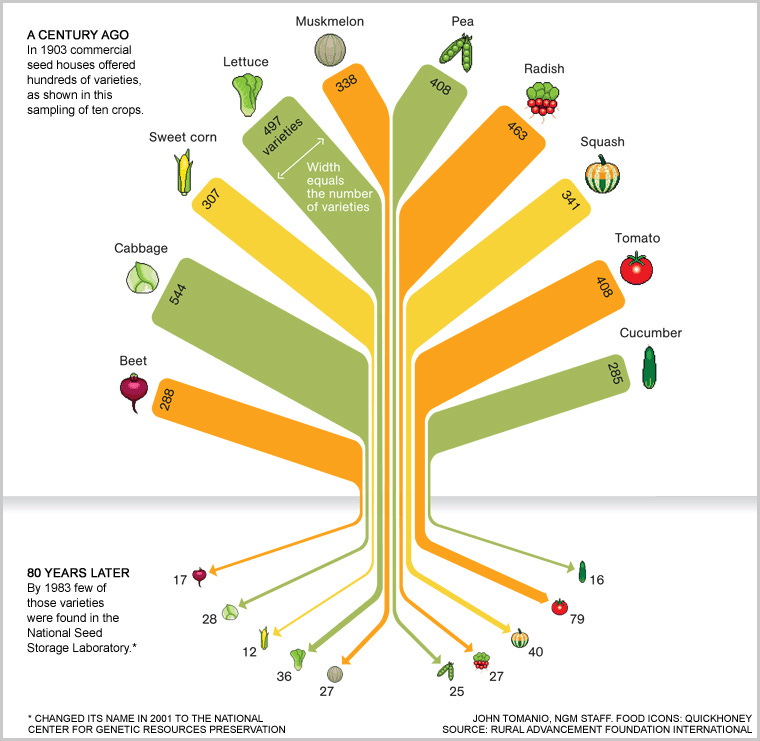


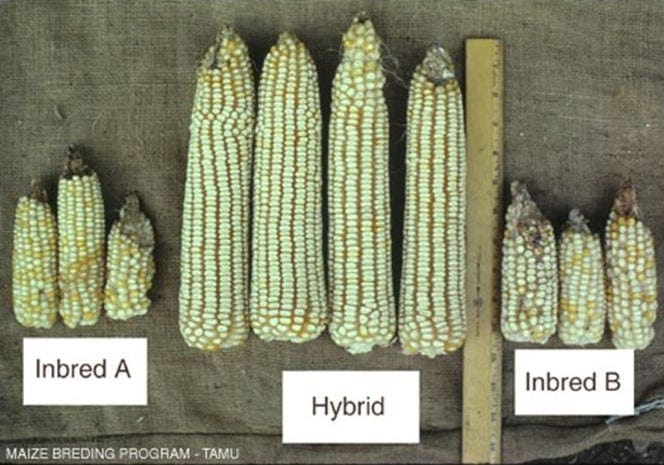
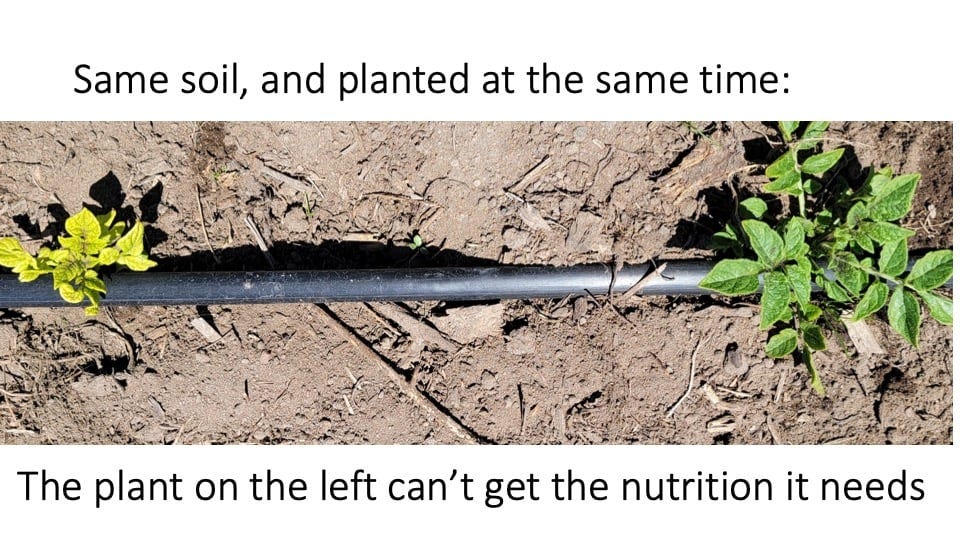
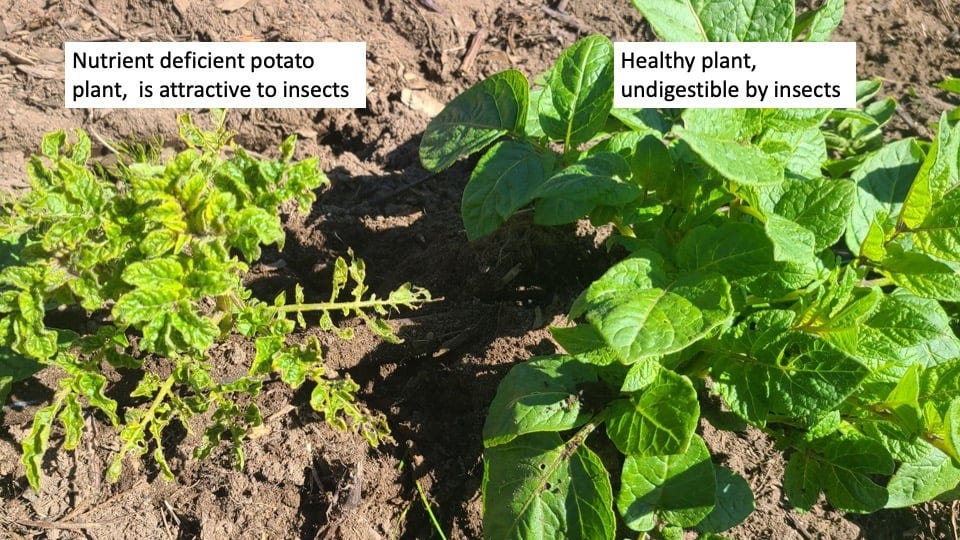
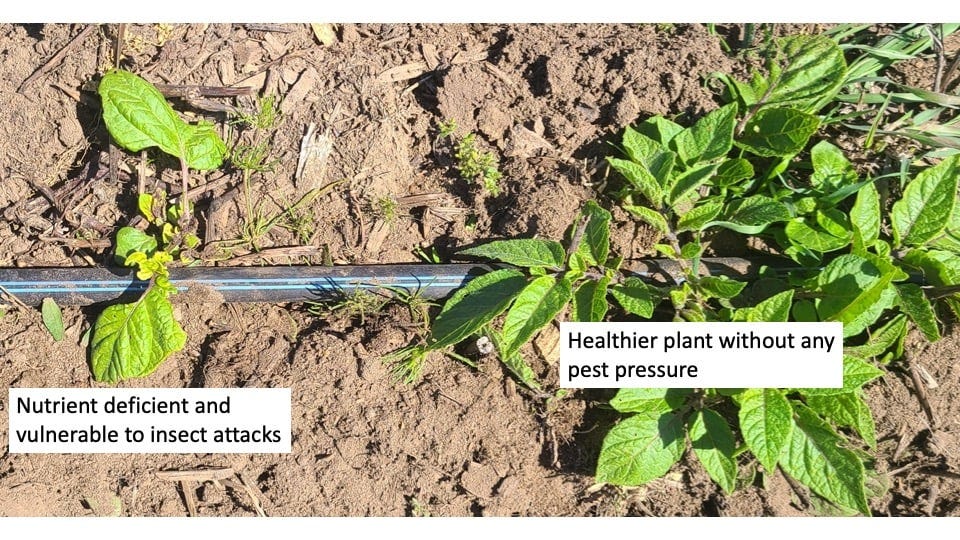

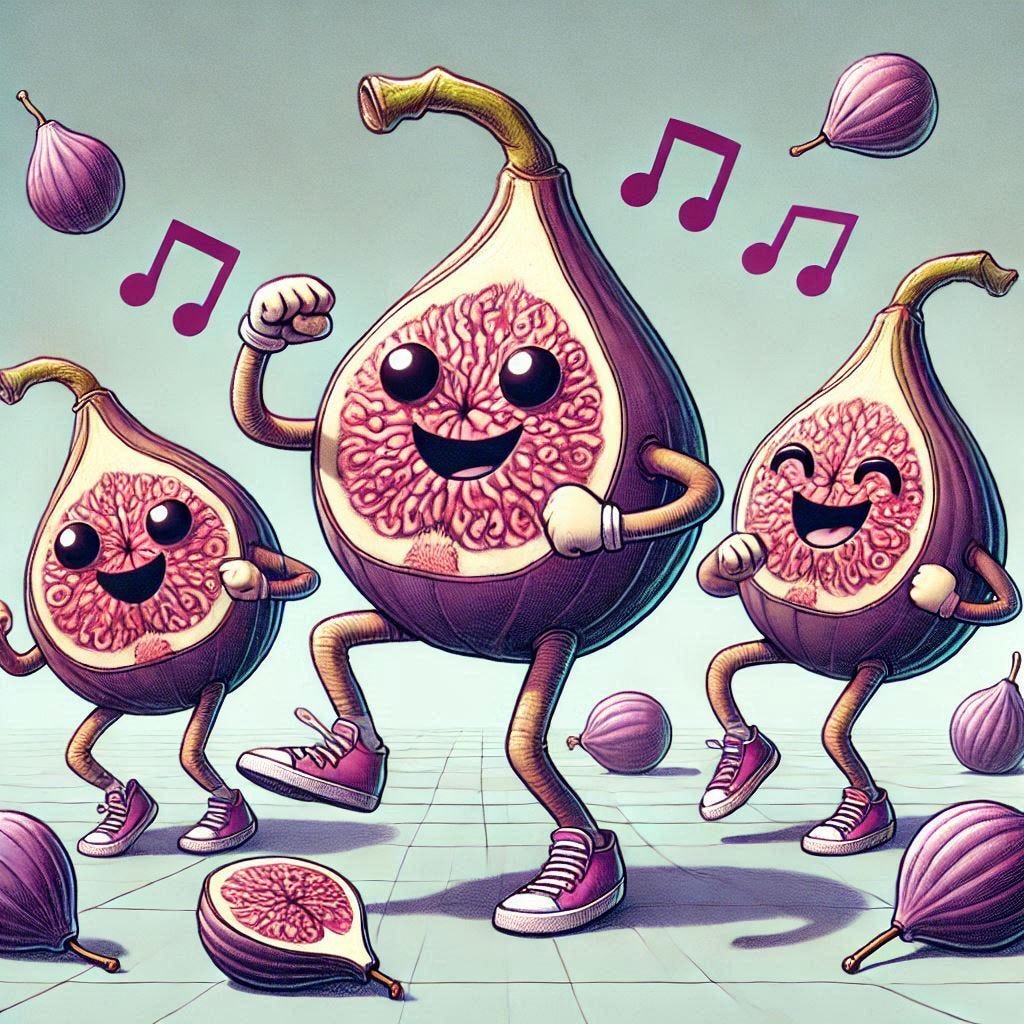
Back breeding specifically for robust genetics usually results in “Hybrid vigor” and occasionally something truly special happens. Imagine not having the Valencia orange for example…before Lue Gim Gong bred it,oranges were almost unrecognizable…..featured thicker, rougher skins and a flavor that could lean toward sweet-tart rather than the consistent sweetness found in modern oranges. After that…. oranges became traded as a commodity on the exchange…Each variety can be greater than the sum of its parts. We never know what can be just around the corner.
great info, as usual. Need to be more mindful of these critical factors. Thank you!